

High-speed rail is emerging in Russia as an increasingly popular means of transport, where it is twice as fast as the regular express trains between Moscow and Saint Petersburg.


High-speed rail is emerging in Russia as an increasingly popular means of transport, where it is twice as fast as the regular express trains between Moscow and Saint Petersburg.

Since June 1963 the Moscow-Leningrad line (ca. 650 kilometers) was serviced by a day train Avrora that offered a 5 hr 27 min ride with speed peaking at 160 km/h, faster speeds were not possible with heavy steel carriages and existing bogies.
Development of the higher speed passenger railway service in the Soviet Russia started in 1965. First, the track and safety infrastructure was upgraded, then in 1972-1975 new aluminum cars with pneumatic suspension bogies, RT-200 (Russkaya Troyka) were designed by KVZ in Kalinin, Russia. It was supposed to be a hauled by a turbojet motor car, but it didn't go beyond experiments so the trainset was hauled by with the Czechoslovak locomotive ChS-2 and its later development ChS-200, being the fastest in the Eastern Bloc. Tests confirmed the trainset was capable of 220 km/h speed on the route, although while being briefly in the commercial service (1975-76) it followed Avrora’s slower schedule.
By 1973 a completely new integrated trainset, the ER-200 EMU was designed and assembled at RVR, in Riga. It was put into service on the Moscow-Leningrad line and with due troubleshooting done during 1979-1987 its maximum speed reached 200 km/h allowing to shorten the journey by one hour, to 4 hrs 20 mins. Since early 1990-ties its ageing parts required extensive repairs, yet still it remained in service until 2009.
Further development of RT-200, Nevsky Express train of TVZ pulled by Czech ChS-200 locomotive, entered into commercial service in 2001, connecting two major cities in 4 hrs 10 mins at 200 km/h. It was planned for retirement, but instead was renovated, provided with newer EP-20 locomotive of Transmashkholding and remains in service as the lower-cost alternative to Sapsan.
Once an attempt to build a fully domestic high-speed (250 km/h) integrated trainset (Sokol) made in 1993-2004 has proven a failure, the government signed an agreement with the German Siemens to supply Velaro trainsets, adopted to the Russian railway environment. EVS1 Sapsan entered into service in 2009 and by 2024 fifteen pairs of high-speed day ensured high-speed railway link between St.Petersburg and Moscow.
However, extensive use of the railway infrastructure for high-speed use required shifting of all freight trains to longer alternative tracking, and many local commuters in St.Petersburg, Moscow and Tver areas to be canceled or change schedule. Thus a project to build a new railway dedicated to high-speed passenger service was revived and by 2024 the construction is underway.
In February 2010, RZD announced that it would unveil proposals in March 2010, for a new "European standard" high-speed line between St Petersburg and Moscow. [2] The new line would be built to Russian gauge and would probably be built parallel to the existing line. [2] At an event on 1 April 2010, it was announced that the new Moscow – St. Petersburg high-speed line would allow trains to run at speeds up to 400 km/h (249 mph). The total journey time would be cut from 3h 45m to 2h 40m. The new line was expected to make extensive use of bridges, tunnels and viaducts. Finance would be provided by a public-private finance vehicle. The line was expected to carry 14 million people in its first year, with capacity for 47 million passengers annually. Representatives from many other high-speed lines were to be consulted, in an effort to avoid construction delays and design flaws. [3]
Apart from faster travel times, the new line would increase capacity, since the current line is congested and there is only room for a limited number of high speed trains. It would also improve safety, since trains currently pass some level crossings at 250 km/h (155 mph). [4]
In November 2021, it was reported that the government was abandoning the proposal in favour of possible upgrades to the existing line. [5]
By 2023, the project was revived and by March 2024 construction had commenced. [6]
| Type | Production | Number built | vmax [km/h] | In service | Status |
|---|---|---|---|---|---|
| Allegro (train) | 2009–2011 | 4 | 220 km/h | 2010-2022 | retired |
| ER-200 | 1974 | 2 | 200 km/h | 1984–2009 | retired |
| Sapsan | 2008 – 2014; 2021 – current | 20 | 250 km/h | since 2009 | 20 in service |
| Sokol (train) | 2000 | 1 | 250 km/h | 2000–2002 (measurement and test drives) | retired |
| Strizh (train) | 2014 | 7 | 200 km/h | since 2015 | stored |
| Nevsky Express | 2000 | 2 | 200 km/h | since 2001 | 2 in service |
This section needs to be updated.(July 2017) |

This section needs to be updated.(February 2015) |
Since the Sapsan service between Moscow and St Petersburg shares tracks with regular passenger trains and freight trains, it has been widely reported that its introduction has resulted in the cancellation of a number of more affordable long-distance passenger and commuter trains, and long delays for many other trains that continue to run. Moreover, the numerous level crossings along the line have to be kept closed to road traffic for longer for the high-speed trains than for regular ones (the crossing is closed 15 minutes ahead of a fast train passing through); the resulting delays have been criticized by motorists and bus passengers, as well as by ambulance and fire services in towns along the railway. In some small towns dependent on commuter trains for connection with the outside world, and on level crossings for local travel, such as Chupriyanovka (Чуприяновка; population 2,500) near Tver, local officials have expressed the sentiment that "our town is cut into two halves for over seven hours each day" and that "we have been cut off from the outside world". Overall, the feeling is widespread that the new service benefits the country's moneyed elite, while severely inconveniencing the majority of the population in the regions through which the railway runs. [15] As of 2015, the additional tracks for high speed trains and over-crossings were built. [16]
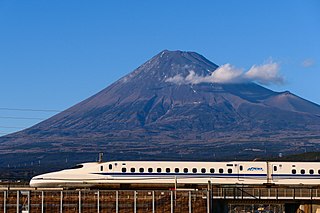
High-speed rail (HSR) is a type of rail transport network utilizing trains that run significantly faster than those of traditional rail, using an integrated system of specialized rolling stock and dedicated tracks. While there is no single standard that applies worldwide, lines built to handle speeds above 250 km/h (155 mph) or upgraded lines in excess of 200 km/h (124 mph) are widely considered to be high-speed.
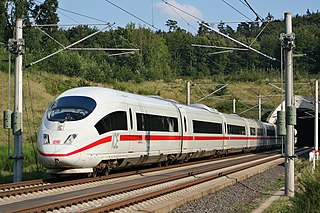
Intercity Express is a high-speed rail system in Germany. It also serves destinations in Austria, France, Belgium, Switzerland and the Netherlands as part of cross-border services. It is the flagship of the German state railway, Deutsche Bahn. ICE fares are fixed for station-to-station connections, on the grounds that the trains have a higher level of comfort. Travelling at speeds up to 320 km/h (200 mph), they are aimed at business travellers and long-distance commuters and marketed by Deutsche Bahn as an alternative to flights.
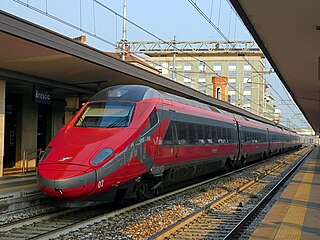
Pendolino is an Italian family of high-speed tilting trains used in Italy, Spain, Germany, Poland, Portugal, Slovenia, Finland, the Czech Republic, Slovakia, the UK, the US, Switzerland, China, and Greece. It was also used in Russia from December 12, 2010 until March 26, 2022. Based on the design of the Italian ETR 401, it was further developed and manufactured by Fiat Ferroviaria, which was taken over by Alstom in 2000.

Sokol was a planned high-speed train in Russia. It was to be a successor of the ER200 for use on the Moscow–St. Petersburg mainline, and was designed to operate at a cruising speed of 250 km/h. A prototype was built in 2000 and tested by Russian High Speed Railway Shareholding Co.

The Saint Petersburg to Moscow railway runs for 649.7 kilometers (403.7 mi) through four oblasts: Leningrad, Novgorod, Tver and Moscow. It is a major traffic artery in the north-west region of Russia, operated by the October Railway subdivision of Russian Railways.

Siemens Velaro is a family of high-speed electric multiple unit trains built by Siemens and used in Germany, Belgium, France, the United Kingdom, the Netherlands, Spain, China, Russia, and Turkey. The Velaro is based on the ICE 3M/F high-speed trains manufactured by Siemens for Deutsche Bahn (DB). Deutsche Bahn were the first to order Siemens high-speed trains; it ordered 13 of these units in 1994, the Nederlandse Spoorwegen (NS) 4 units. The trains were delivered in 1999 for service and were labeled and marketed as the Velaro by their manufacturer, Siemens.
This is a list of planned, or proposed, high-speed rail projects by country. Although a number of countries have conducted preliminary feasibility studies, many lines are eventually shelved or postponed due to high costs; only a few nations are building high-speed rail lines. Planned lines are separated here from lines under construction, and some countries have both. High-speed rail is public transport by rail at speeds over 200 km/h.

Although Finland has no dedicated high-speed rail lines, sections of its rail network are capable of running speeds of 200 km/h (124 mph). The Finnish national railway company VR operates tilting Alstom Pendolino trains. The trains reach their maximum speed of 220 km/h (137 mph) in regular operation on a 75.7 km (47.0 mi) route between Kerava and Lahti. This portion of track was opened in 2006. The trains can run at 200 km/h (124 mph) on a longer route between Helsinki and Seinäjoki and peak at that speed between Helsinki and Turku. The main railway line between Helsinki and Oulu has been upgraded between Seinäjoki and Oulu to allow for trains to run at speeds between 160 km/h (99 mph) and 200 km/h (124 mph). Other parts of the Finnish railway network are limited to lower speed.
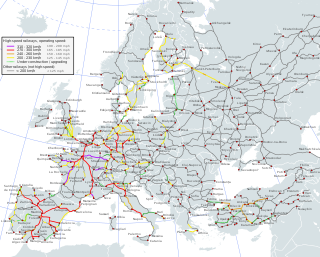
High-speed rail (HSR) has developed in Europe as an increasingly popular and efficient means of transport. The first high-speed rail lines on the continent, built in the 1970s, 1980s, and 1990s, improved travel times on intra-national corridors. Since then, several countries have built extensive high-speed networks, and there are now several cross-border high-speed rail links. Railway operators frequently run international services, and tracks are continuously being built and upgraded to international standards on the emerging European high-speed rail network.

In Sweden many trains run at 200 km/h (125 mph). Train types which currently attain this speed include the X 2000 tilting trains for long distances, the Regina widebody trains, the X40 double-decker regional trains, the Arlanda Airport Express X3, the MTRX-trains, FlixTrains and the Stadler KISS-inspired double-decker regional trains. Since both the X2 and X3 are allowed to run at 205 km/h (127 mph) in case of delay, they can technically be considered as high-speed trains. The X2 runs between many cities in Sweden including Stockholm, Gothenburg, and Malmö. The Arlanda Express trains connect Stockholm and Stockholm-Arlanda Airport.
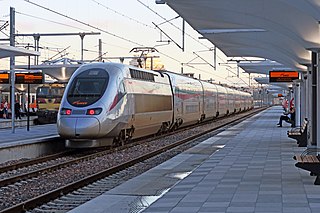
Al Boraq is a 323-kilometre (201 mi) high-speed rail service between Casablanca and Tangier in Morocco. The first of its kind on the African continent, it opened on 15 November 2018 after a decade of planning and construction by ONCF, Morocco's national railway company.

The Sapsan is a Russian gauge high speed electric express train. The train is a Siemens Velaro model, which in turn is based on the ICE 3M/F high-speed trains manufactured by Siemens for the German Deutsche Bahn (DB), known as the Siemens Velaro RUS.
High-speed rail service commenced in Poland on 14 December 2014, with the introduction of 20 non-tilting New Pendolino trainsets operating on 4 designated lines radiating out from Warsaw. Polish State Railways started passenger service using Pendolino trains operating at a maximum speed of 200 km/h on 80 km line Olszamowice-Zawiercie. From December 2017 there are two 200 km/h sections, 136 km long in total. All high-speed services operated by PKP in Poland are branded as Express Intercity Premium (EIP).
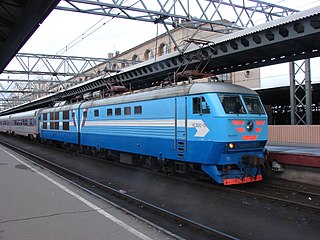
The Nevsky Express is a Russian Railways express train, formerly the fastest on the prominent route between the Leningradsky Rail Terminal in Moscow and the Moskovsky Rail Terminal in Saint Petersburg. The train has a maximum speed of 200 km/h (125 mph) and does not make any intermediate station stops. It consists of a Škoda Chs200locomotive, 13 passenger cars and a restaurant car. It features 6-person compartments in some cars and airline style seating in other cars.

The Tsarskoye Selo Railway was the first public railway line in the Russian Empire. It ran for 27 km (17 mi) from Saint Petersburg to Pavlovsk through the nearby (4 km) Tsarskoye Selo. Construction began in May 1836, and the first test trips were carried out the same year between Tsarskoye Selo and Pavlovsk, using horse-drawn trains. The line was officially opened on 30 October 1837, when an 8-carriage train was hauled by a steam locomotive between Saint Petersburg and Tsarskoye Selo. Until the construction of the Moscow – Saint Petersburg Railway in 1851, it was the only passenger train line in Russia. In 1899 it was merged into the Moscow-Windau-Rybinsk Railways and now forms part of the Oktyabrskaya Railway.

Nizhny Novgorod railway station is a central station in Nizhny Novgorod, Russia. In terms of the amount of work performed, the 1st class station, and by the nature of the work performed, is a cargo station. It was opened on August 2, 1862.

The Lastochka is a German/Russian commuter intercity electric multiple unit train used across multiple Russian cities, based on the Siemens Desiro design and manufactured by Siemens and Ural Locomotives.

The Strizh is a Russian locomotive-hauled, low-floor, high-speed express train.
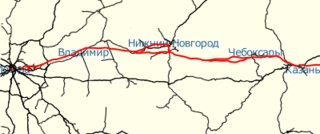
The Moscow–Kazan high-speed railway is a planned 772-kilometre long high-speed railway line connecting the cities of Moscow and Kazan in the Russian Federation, going through the intermediate cities of Vladimir, Nizhny Novgorod and Cheboksary. The project had an original expected completion date of 2023, and was slated to be the first segment of an ambitious transnational high-speed railway set to connect Beijing and Moscow over a distance in excess of 7,000 kilometres, which is currently under consideration by the governments of Russia and China. Planning work was finished in September 2017. Preliminary construction on stations and platforms, with space reserved for the railway, started in spring 2018. Construction on the railway has been postponed as of March 2020, due to the high cost and in lieu of further studies on ridership.
Moscow–Saint Petersburg high-speed railway, also known as VSM-1 is a high-speed railway line under construction in Russia.
{{cite web}}: CS1 maint: numeric names: authors list (link)